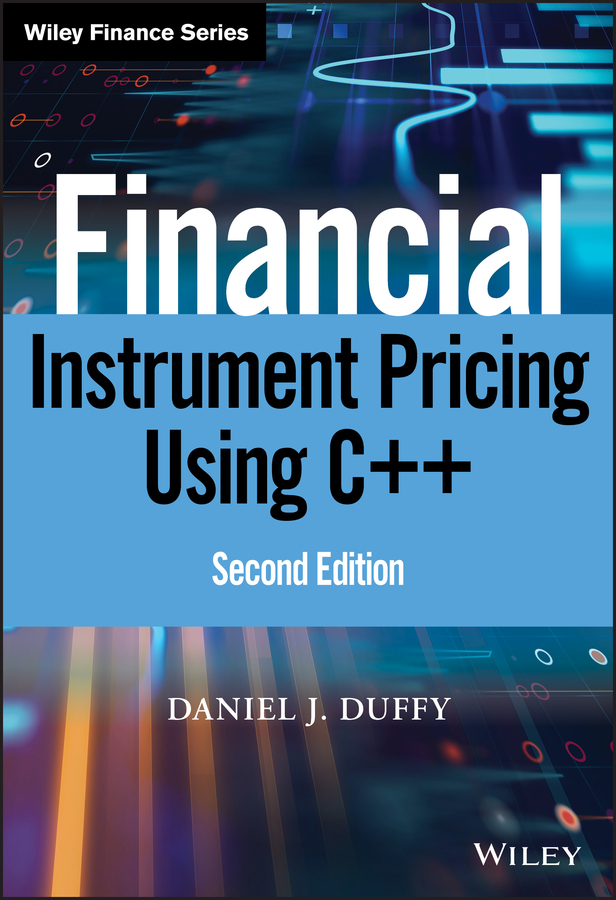Электронная книга: Daniel Duffy J. «Financial Instrument Pricing Using C++»

|
An integrated guide to C++ and computational finance This complete guide to C++ and computational finance is a follow-up and major extension to Daniel J. Duffy's 2004 edition of Financial Instrument Pricing Using C++. Both C++ and computational finance have evolved and changed dramatically in the last ten years and this book documents these improvements. Duffy focuses on these developments and the advantages for the quant developer by: Delving into a detailed account of the new C++11 standard and its applicability to computational finance. Using de-facto standard libraries, such as Boost and Eigen to improve developer productivity. Developing multiparadigm software using the object-oriented, generic, and functional programming styles. Designing flexible numerical algorithms: modern numerical methods and multiparadigm design patterns. Providing a detailed explanation of the Finite Difference Methods through six chapters, including new developments such as ADE, Method of Lines (MOL), and Uncertain Volatility Models. Developing applications, from financial model to algorithmic design and code, through a coherent approach. Generating interoperability with Excel add-ins, C#, and C++/CLI. Using random number generation in C++11 and Monte Carlo simulation. Full source code is available by registering at www.datasimfinancial.com. Duffy adopted a spiral model approach while writing each chapter of Financial Instrument Pricing Using C++ 2e: analyse a little, design a little, and code a little. Each cycle ends with a working prototype in C++ and shows how a given algorithm or numerical method works. Additionally, each chapter contains non-trivial exercises and projects that discuss improvements and extensions to the material. This book is for designers and application developers in computational finance, and assumes the reader has some fundamental experience of C++ and derivatives pricing. Издательство: "John Wiley&Sons Limited (USD)"
ISBN: 9781119170495 электронная книга Купить за 7479.54 руб и скачать на Litres |
Другие книги автора:
| Книга | Описание | Год | Цена | Тип книги |
|---|---|---|---|---|
| Financial Instrument Pricing Using C++ | One of the best languages for the development of financial engineering and instrument pricing applications is C++. This book has several features that allow developers to write robust, flexible and… — John Wiley&Sons Limited (USD), электронная книга Подробнее... | электронная книга |
См. также в других словарях:
Theoretical value of a financial instrument — The value of a financial instrument using a pricing model for that financial instrument … International financial encyclopaedia
Financial betting — refers to the wagering on the price development of a financial instrument at some later date relative to the current price or level of the instrument, against odds offered by a bookmaker. Maximum potential pay off of the wager is known when the… … Wikipedia
Financial market — Finance Financial markets Bond market … Wikipedia
Binomial options pricing model — BOPM redirects here; for other uses see BOPM (disambiguation). In finance, the binomial options pricing model (BOPM) provides a generalizable numerical method for the valuation of options. The binomial model was first proposed by Cox, Ross and… … Wikipedia
Rational pricing — is the assumption in financial economics that asset prices (and hence asset pricing models) will reflect the arbitrage free price of the asset as any deviation from this price will be arbitraged away . This assumption is useful in pricing fixed… … Wikipedia
Monte Carlo methods for option pricing — In mathematical finance, a Monte Carlo option model uses Monte Carlo methods to calculate the value of an option with multiple sources of uncertainty or with complicated features. [1] The term Monte Carlo method was coined by Stanislaw Ulam in… … Wikipedia
